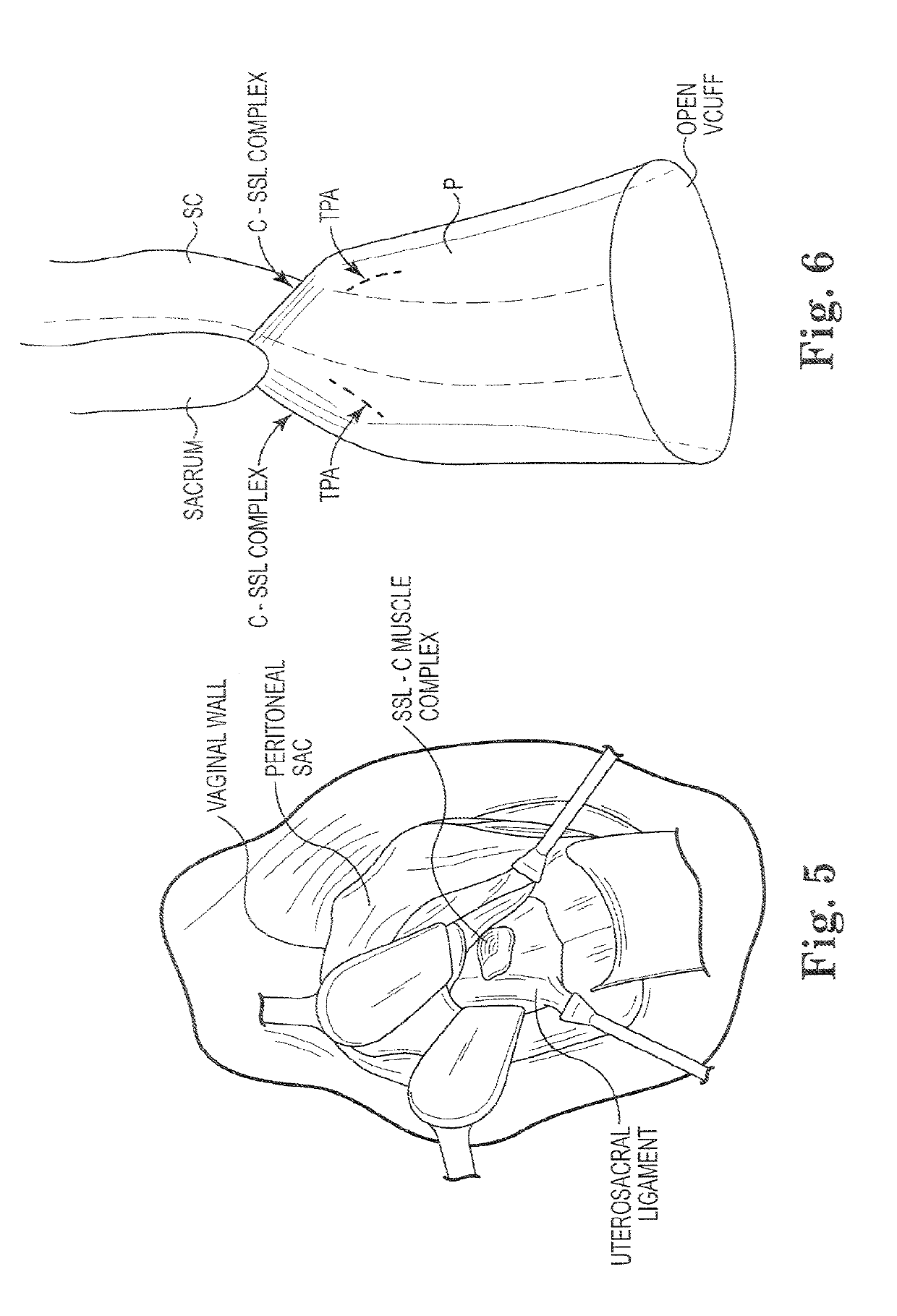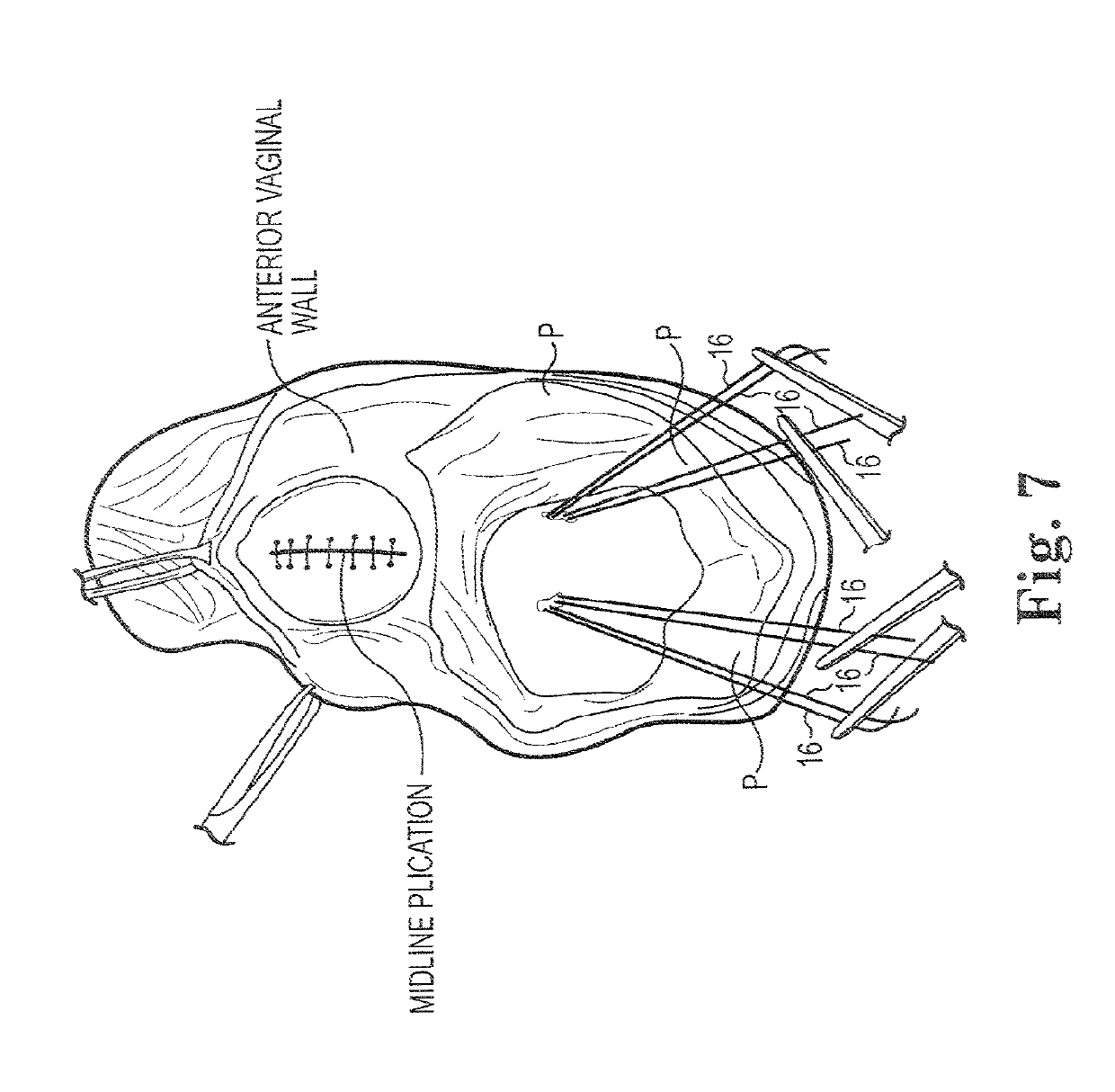Transperitoneal prolapse repair system and method priority
a transperitoneal prolapse and repair system technology, applied in the field of surgical methods and equipment, can solve the problems of weakening or damage to the normal pelvic support system, the vaginal wall bulge, etc., and achieve the effects of less deviation of the vaginal axis, and convenient repair
- Summary
- Abstract
- Description
- Claims
- Application Information
AI Technical Summary
Benefits of technology
Problems solved by technology
Method used
Image
Examples
Embodiment Construction
[0022]Referring generally to FIGS. 1-12, a prolapse repair system 10 and methods are shown. Various embodiments of the system 10 can include anchor support devices 12 having one or more anchors 14 and one or more members 16 extending from the one or more anchors 14. The one or more anchors can include angled tines 15 to promote engagement and fixation within tissue of the patient. The one or more members 16 can be a suture member. The suture members 16 can be constructed of a material adapted to absorb into the body over time (e.g., continuous delayed absorption). In certain embodiments, the one or more members 16 can include two or more suture members extending from the anchor, as shown in FIGS. 2 and 4. The anchor 14 can be constructed of a polymer or like material. The system 10 provides a device and procedure that can position the vaginal apex so that it is not distorted, or at least reduces any distortion.
[0023]Various embodiments of the anchor support device 12 can include a m...
PUM
 Login to View More
Login to View More Abstract
Description
Claims
Application Information
 Login to View More
Login to View More - R&D
- Intellectual Property
- Life Sciences
- Materials
- Tech Scout
- Unparalleled Data Quality
- Higher Quality Content
- 60% Fewer Hallucinations
Browse by: Latest US Patents, China's latest patents, Technical Efficacy Thesaurus, Application Domain, Technology Topic, Popular Technical Reports.
© 2025 PatSnap. All rights reserved.Legal|Privacy policy|Modern Slavery Act Transparency Statement|Sitemap|About US| Contact US: help@patsnap.com



